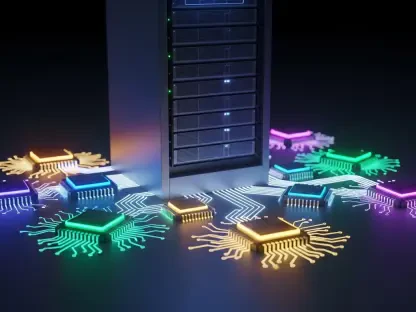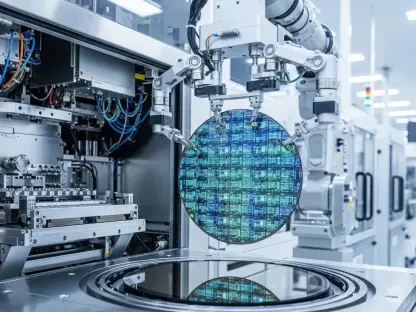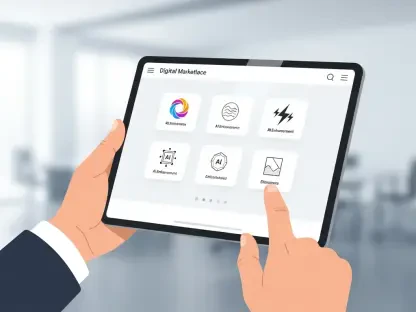Imagine a world where the clutter of charging cables is a distant memory, where smartphones, IoT sensors, and even industrial tools draw power effortlessly through the air. Wireless Power Transfer (WPT) technology, first conceptualized by Nikola Tesla over a century ago, harnesses electromagnetic fields to transmit energy without physical connections, making this vision tangible. Already embedded in everyday items like wireless chargers and electric toothbrushes, WPT holds immense promise. Yet, a persistent challenge remains: ensuring consistent efficiency and stability under varying conditions. Fluctuations in load or environmental factors often disrupt performance, hindering broader adoption. This critical barrier has spurred innovative solutions, with machine learning emerging as a transformative force. By redefining how WPT systems are designed and optimized, this technology is poised to unlock unprecedented levels of reliability, paving the way for a future where wireless power is as ubiquitous as Wi-Fi.
Revolutionizing Wireless Power with Machine Learning
Overcoming Traditional Design Challenges
The journey to perfecting WPT systems has long been obstructed by the limitations of traditional design methods, which often rely on oversimplified analytical models. These approaches assume idealized conditions, failing to account for real-world variables such as component imperfections or temperature shifts. As a result, maintaining stable output voltage and achieving zero-voltage switching (ZVS)—a technique crucial for minimizing power loss—becomes a daunting task when loads fluctuate. Such inefficiencies not only reduce performance but also limit the practicality of WPT for diverse applications, from consumer electronics to industrial setups. The gap between theoretical models and actual performance has historically slowed the technology’s integration into mainstream use, leaving engineers searching for a more adaptable solution to ensure reliability across unpredictable scenarios.
Machine learning offers a groundbreaking way to bridge this gap, as demonstrated by a pioneering study from Chiba University, published in IEEE Transactions on Circuits and Systems I. Led by Professor Hiroo Sekiya, the research introduces a data-driven approach that transcends the constraints of conventional equations. By leveraging algorithms to analyze and adapt to complex system dynamics, this method ensures load-independent operation, meaning the system maintains stability regardless of demand. Unlike past reliance on static assumptions, machine learning enables continuous optimization, addressing irregularities that traditional designs overlook. This shift promises to enhance efficiency, making WPT systems more viable for widespread deployment in settings where consistency is paramount.
A New Numerical Framework
At the heart of this innovation lies a fully numerical design framework, a departure from rigid analytical models, crafted by a collaborative team from Chiba University, Tokyo University of Science, and Sojo University. This approach uses differential equations to simulate the intricate behavior of voltages and currents within WPT systems, capturing nuances that mirror real-world conditions. Unlike older methods that often gloss over component variations, this framework provides a detailed, dynamic representation of system performance. Such precision allows engineers to predict and mitigate issues like power loss or voltage instability before they arise. The result is a design process that aligns closely with practical outcomes, setting a new standard for accuracy in the field of wireless power technology.
Further elevating this framework is the integration of a genetic algorithm, a machine learning technique that iteratively refines system parameters for optimal results. By mimicking natural selection, the algorithm evaluates countless configurations to identify those that best achieve load-independent operation and maximize power delivery efficiency. This iterative process hones in on solutions that ensure ZVS and stable output under diverse conditions, something traditional trial-and-error methods struggle to accomplish. The ability to adaptively fine-tune settings based on real-time data marks a significant leap forward, offering a scalable solution for WPT systems. This blend of numerical modeling and machine learning not only solves existing design challenges but also lays the groundwork for future advancements in energy transmission.
Real-World Applications and Performance
The Class-EF WPT System Breakthrough
One of the standout achievements of this research is its application to the class-EF WPT system, a sophisticated setup combining a class-EF inverter with a class-D rectifier. This design excels in addressing the common issue of performance degradation under varying loads, a problem that has plagued earlier systems. The study reveals remarkable results: output voltage fluctuations are kept below 5%, a stark improvement over the 18% variations seen in conventional designs. Operating at a frequency of 6.78 MHz, the system delivers over 23 watts of power with an efficiency rate of 86.7%. These metrics highlight a level of stability and effectiveness that makes the class-EF system a promising candidate for practical implementation across multiple sectors, from powering small gadgets to supporting larger devices.
Beyond raw numbers, the class-EF system’s resilience to load changes stems from its ability to manage diode parasitic capacitance effects, particularly at lighter loads where inefficiencies typically spike. Detailed power loss analysis from the research shows that the transmission coil maintains consistent dissipation levels, thanks to steady output current regardless of demand shifts. This stability ensures that energy waste is minimized, enhancing overall performance. Such advancements signify more than just technical progress; they represent a step toward making WPT systems reliable enough for everyday use. By tackling these specific challenges, the research offers a blueprint for engineers to build systems that can withstand the unpredictability of real-world applications.
Vision for a Wireless Future
The implications of load-independent WPT systems extend far beyond laboratory results, pointing to a transformative vision articulated by the research team. They foresee a “wholly wireless society” emerging within the next 5 to 10 years, where compact and cost-effective WPT solutions become commonplace. Load independence plays a pivotal role in this future by simplifying system architecture, reducing the need for bulky components, and lowering production costs. This could democratize access to wireless power, embedding it into everything from household appliances to industrial machinery. The potential to eliminate cords and connectors entirely reimagines how energy is accessed, promising a level of convenience and flexibility that aligns with modern technological expectations.
Moreover, achieving such a vision hinges on the scalability that load-independent designs provide. By ensuring consistent performance across a range of conditions, these systems can be seamlessly integrated into diverse environments without extensive customization. Professor Sekiya emphasizes that simplifying WPT technology could accelerate its adoption, making it a standard feature in consumer electronics and beyond. This shift would not only enhance user experience but also reduce reliance on wired infrastructure, cutting down on material waste and maintenance costs. As research continues to refine these systems, the dream of a wireless future moves closer to reality, offering a glimpse of a world where power delivery is as effortless as connecting to a network.
Broader Implications and Trends
The Rise of AI in Power Electronics
A significant trend underscored by this study is the growing influence of artificial intelligence (AI) and machine learning in the realm of power electronics. These technologies are reshaping engineering practices by enabling data-driven design processes that adapt to complex, real-world challenges. In the context of WPT, machine learning algorithms like genetic optimization provide a way to navigate the intricate interplay of system variables, achieving outcomes that static models cannot. This trend extends beyond wireless power, reflecting a broader movement across disciplines to leverage AI for automation and precision. The ability to iteratively improve designs based on empirical data ensures that solutions are not only theoretically sound but also practically viable, enhancing scalability for commercial and industrial applications.
This shift toward AI-driven methodologies also signals a departure from traditional reliance on human intuition or manual adjustments in design processes. By incorporating evaluation functions that assess metrics like output voltage stability and total harmonic distortion, machine learning offers a quantifiable approach to optimization. The result is a more efficient workflow that minimizes errors and accelerates development timelines. For WPT, this means faster progress toward systems that can handle diverse loads without compromising performance. As AI continues to permeate engineering fields, its role in transforming power electronics will likely expand, setting new benchmarks for innovation and efficiency in how energy systems are conceived and implemented.
Shaping Energy Access and Sustainability
The societal impact of advancing WPT technology through machine learning cannot be overlooked, as it holds the potential to redefine energy access on a global scale. If wireless power becomes as pervasive as wireless communication, it could eliminate the need for extensive physical infrastructure, particularly in remote or underserved regions. This would enable devices and systems to operate without the constraints of wired grids, fostering greater connectivity and technological inclusion. From powering IoT networks in smart cities to supporting off-grid communities, the ripple effects of reliable WPT systems promise to enhance quality of life by making energy more accessible and less dependent on traditional setups.
Equally important is the contribution to sustainability that widespread adoption of efficient WPT systems could bring. By reducing power loss through optimized designs, as seen in the class-EF system’s 86.7% efficiency, energy waste is curtailed, aligning with global efforts to conserve resources. Additionally, minimizing the need for cables and connectors cuts down on material use and electronic waste, supporting a circular economy. The vision of a wireless society, backed by load-independent technology, also encourages the integration of renewable energy sources into portable systems, further reducing carbon footprints. As these innovations mature, they stand to play a crucial role in shaping a future where energy delivery is not only seamless but also environmentally responsible, addressing pressing challenges in both access and conservation.









